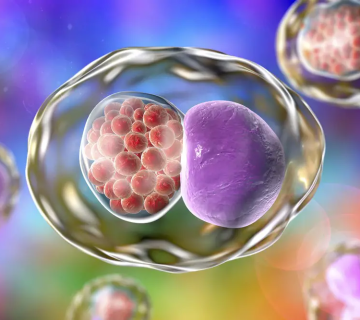How to Cure Chlamydia Without Going to the Doctor: A Comprehensive Guide
Chlamydia is one of the most common sexually transmitted infections (STIs) in the U.S. If you’re here, you might be wondering if there’s a way to treat chlamydia at home without visiting a doctor. Maybe you’re worried about privacy, cost, or just feel uncomfortable talking to a healthcare provider. While these concerns are valid, it’s crucial to understand one key fact upfront: chlamydia is a bacterial infection, and it requires prescription antibiotics to be cured effectively. Without proper treatment, it can lead to serious health issues like infertility, chronic pain, or pelvic inflammatory disease (PID).
In this article, we’ll dive deep into:
-
- Why self-treating chlamydia isn’t safe or effective
-
- What happens if chlamydia goes untreated
-
- How to recognize chlamydia symptoms
-
- Home remedies that can help manage symptoms (but won’t cure the infection)
-
- Safe ways to get treatment if you’re avoiding in-person doctor visits
-
- Tips to prevent chlamydia in the future
Why You Can’t Cure Chlamydia Without Antibiotics
The Core Problem: Chlamydia Is a Bacterial Infection
Chlamydia is caused by a bacteria called Chlamydia trachomatis. Unlike a cold or flu, which your immune system might fight off naturally, chlamydia requires specific antibiotics to kill the bacteria. Here’s why:
-
- Antibiotics target bacteria directly: Common antibiotics like azithromycin or doxycycline are designed to attack the bacteria causing chlamydia. Without them, the infection can persist and spread.
-
- Home remedies can’t kill bacteria: While some natural remedies might help with symptoms (like discomfort or inflammation), they don’t address the root cause—the bacteria itself.
Why Home Remedies Won’t Work
Let’s be clear: no natural remedy can cure chlamydia. Here’s why:
-
- Herbs like goldenseal or echinacea: These might have antibacterial properties, but they’re not strong enough to kill chlamydia bacteria. Studies show they can’t replace antibiotics (Source: National Center for Complementary and Integrative Health, 2022).
-
- Supplements like vitamin C or zinc: These boost your immune system, but they don’t target the infection directly.
-
- Heat pads or rest: These can help with discomfort, but they don’t address the underlying infection.
❌ Don’t rely on home remedies to cure chlamydia—they won’t work and can delay proper treatment.
What Happens If You Don’t Treat Chlamydia?
Short-Term Risks
If left untreated, chlamydia can cause:
-
- Increased discomfort, like itching, burning, or pain during urination or sex.
-
- Abnormal discharge (yellow or green) from the vagina or penis.
Long-Term Complications
Delaying treatment can lead to serious health issues:
-
- Pelvic Inflammatory Disease (PID): In women, chlamydia can spread to the uterus and fallopian tubes, causing PID. This can lead to:
-
- Chronic pelvic pain
-
- Infertility (trouble getting pregnant)
-
- Ectopic pregnancy (a dangerous condition where a pregnancy develops outside the uterus)
-
- Pelvic Inflammatory Disease (PID): In women, chlamydia can spread to the uterus and fallopian tubes, causing PID. This can lead to:
-
- Epididymitis: In men, chlamydia can infect the epididymis (a tube near the testicles), potentially causing infertility.
-
- Prostatitis: Men might develop prostate infections.
-
- Reiter’s Syndrome: This rare condition causes joint pain, eye inflammation, and urinary problems.
-
- Increased HIV risk: Untreated chlamydia makes you more vulnerable to HIV if exposed.
Real-Life Example
Imagine Sarah, a 22-year-old college student, notices some mild burning when she pees. She thinks it’s just a urinary tract infection (UTI) and tries drinking cranberry juice. Months later, she starts having severe abdominal pain and learns she has PID from untreated chlamydia. Now, she’s at risk of infertility—all because she delayed treatment. Don’t let this happen to you.
Recognizing Chlamydia Symptoms
Common Symptoms
Chlamydia is often called a “silent infection” because many people don’t have symptoms. But when symptoms do appear, they might include:
| Symptom | For Women | For Men |
|---|---|---|
| Discomfort | Itching, burning, or pain in the genitals | Itching, burning, or pain in the genitals |
| Abnormal Discharge | Increased vaginal discharge (yellow or green) | Discharge from the penis (yellow or green) |
| Pain During Urination | Burning or pain when peeing | Burning or pain when peeing |
| Pain During Sex | Pain during intercourse | Rarely causes painful sex |
| Bleeding | Bleeding after sex or between periods | Not common |
| Abdominal Pain | Lower abdominal pain | Not common |
Silent Symptoms: Why Testing Is Key
Up to 70% of women and 50% of men with chlamydia have no symptoms (CDC, 2023). That’s why regular STI testing is critical, especially if:
-
- You have multiple sexual partners.
-
- You don’t always use condoms.
-
- You’ve had a partner who’s tested positive for chlamydia.
✔️ Tip: If you’re sexually active, get tested at least once a year—even if you feel fine.
Home Remedies: What Can (and Can’t) Help
What Home Remedies Can Do
While they can’t cure chlamydia, some home remedies can help manage symptoms while you wait for proper treatment:
-
- Rest: Helps your body fight infections and reduces fatigue.
-
- Healthy diet: Foods rich in antioxidants (like berries, spinach, and nuts) support your immune system.
-
- Supplements:
-
- Vitamin C: Boosts immunity (500–1000 mg daily, but check with a doctor).
-
- Zinc: Supports healing (up to 30 mg daily, but don’t exceed recommended doses).
-
- Supplements:
-
- Herbs:
-
- Goldenseal: May have mild antibacterial properties (available as tea or capsules).
-
- Echinacea: May reduce inflammation (available as tea or supplements).
-
- Herbs:
-
- Heat pads: Apply to your lower abdomen to ease pain or cramping.
✔️ Tip: Always talk to a doctor before trying supplements or herbs—they can interact with medications.
What Home Remedies Can’t Do
-
- ❌ They can’t kill the chlamydia bacteria.
-
- ❌ They can’t prevent complications like PID or infertility.
-
- ❌ They can’t replace antibiotics.
Example: Why Home Remedies Aren’t Enough
Let’s say Mike, a 25-year-old, tries using garlic (a popular “natural antibiotic”) to treat his chlamydia symptoms. He feels better temporarily, but the infection spreads, and he develops epididymitis. Now, he needs stronger treatment and risks fertility issues. Don’t make the same mistake.
Safe Alternatives to In-Person Doctor Visits
Why Avoiding Treatment Isn’t the Answer
We get it—seeing a doctor can feel intimidating. Maybe you’re worried about:
-
- Embarrassment: Talking about STIs can feel awkward.
-
- Cost: Clinic visits or tests might seem expensive.
-
- Privacy: You’re concerned about your information being shared.
But avoiding treatment puts your health at risk. Luckily, there are safe, affordable alternatives to in-person visits.
Option 1: Telehealth Services
Telehealth lets you talk to a doctor online or over the phone. Here’s how it works:
-
- Find a telehealth provider: Look for services like Planned Parenthood, Teladoc, or Nurx (many specialize in STIs).
-
- Fill out a questionnaire: Answer questions about your symptoms and sexual history.
-
- Get a prescription: If diagnosed, the doctor can prescribe antibiotics (like azithromycin or doxycycline) and send them to your pharmacy or deliver them to your door.
-
- Cost: Often $20–$50 per visit, and some services accept insurance.
✔️ Tip: Check if your state allows telehealth prescriptions for STIs (most do).
Option 2: Online STI Testing and Treatment
Some companies offer at-home STI testing kits and treatment:
-
- How it works:
-
- Order a test kit online (e.g., Everlywell, LetsGetChecked).
-
- Collect a urine sample or swab and mail it back.
-
- Get results online (usually within days).
-
- If positive, they connect you with a doctor for a prescription.
-
- How it works:
-
- Cost: $100–$200 for testing and treatment (some insurance plans cover it).
Option 3: Free or Low-Cost Clinics
-
- Planned Parenthood: Offers sliding-scale fees based on income.
-
- Local health departments: Many provide free or low-cost STI testing and treatment.
-
- College health centers: If you’re a student, check if your school offers free services.
✔️ Tip: Bring a friend for support if you’re nervous about going alone.
How to Protect Yourself from Chlamydia in the Future
Prevention Tips
Preventing chlamydia is easier than treating it. Here are practical steps:
-
- Use condoms: Latex or polyurethane condoms reduce the risk of STIs.
-
- Get tested regularly: At least once a year, or more often if you have multiple partners.
-
- Be monogamous: Stick to one partner who’s tested negative for STIs.
-
- Talk to your partner: Ask about their STI history and testing.
-
- Avoid sex with infected partners: Wait until they’ve completed treatment.
Example: A Safer Approach
Imagine Alex, a 19-year-old, starts dating someone new. They decide to get tested together and use condoms until they know they’re both STI-free. This open communication prevents potential infections and builds trust. You can do this too!
Unique Insights: What Other Articles Don’t Tell You
Emotional and Mental Health Concerns
Chlamydia can feel isolating, but you’re not alone. Here are tips to cope:
-
- Talk to someone you trust: A friend, family member, or counselor can help you feel supported.
-
- Join online support groups: Forums like Reddit’s r/STD or Planned Parenthood’s chat services offer anonymous advice.
-
- Address stigma: Remember, STIs are common, and seeking help is a sign of strength—not shame.
Latest Research (2023)
-
- Antibiotic resistance: Some studies suggest chlamydia bacteria are becoming resistant to certain antibiotics (Source: Journal of Infectious Diseases, 2023). This makes it even more important to get proper treatment from a doctor.
-
- At-home testing accuracy: New research shows at-home STI tests are 95% accurate when used correctly (Source: CDC, 2023). This is a great option if you’re avoiding clinics.
Interactive Content: Your Next Steps
Quiz: Should You See a Doctor?
Answer these questions to decide:
-
- Do you have symptoms like pain, discharge, or burning? (Yes/No)
-
- Have you had unprotected sex recently? (Yes/No)
-
- Has a partner tested positive for chlamydia? (Yes/No)
✔️ If you answered “Yes” to any question, it’s time to get tested and treated. Use telehealth or a clinic for safe, private care.
Call to Action
-
- Leave a comment: Have you tried telehealth for STIs? Share your experience to help others!
-
- Ask a question: Not sure where to start? Drop your question below, and we’ll respond.
-
- Share this article: Help someone you care about stay informed and healthy.
Final Thoughts
Chlamydia is a serious infection that requires antibiotics to cure. While home remedies can help with symptoms, they can’t replace proper treatment. Delaying care can lead to complications like infertility, chronic pain, or increased HIV risk. But you can get help safely and privately through telehealth, online STI services, or low-cost clinics.
Remember: Your health matters, and seeking help is a brave step. Whether you use condoms, get tested regularly, or talk openly with partners, you have the power to protect yourself and prevent future infections. Take action today—you’ve got this!




No comment